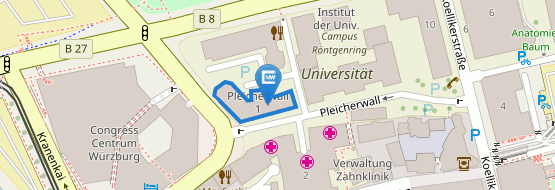Cylinderrotation in nano
07/25/2016It sounds like a high-tech-story but has it’s origins in a time long ago. It is small, too, but far away from nano-size. Nevertheless, it was made visible in “nano”, the 3sat science magazine.
Behind this mysterious description lays a seeming triviality which became quite an adventure: The digitalization of wax cylinders at the Adolf-Würth-Centre (AWZ). Wax cylinders are sound carrier of primeval times, forerunner of shellac and long-playing records, CD, DVD and Blue-ray. We are dealing with wax cylinders of around 10 centimeter length, 5.5 centimeter width which are about half a centimeter thick. The recording was made pure mechanically with an Edison-phonograph. People talked, made music or sang in front of an acoustic horn, the sound was reinforced and captured with a stylus which engraved the sound waves in soft wax. Once engraved the recording could be only heard limited times before it became useless. It was not until the galvanic technology made it possible to make copies from the soft to more resistant cylinders which laid the foundation for music industry.
On a journey with wax cylinders
Since the end of 19th century, wax cylinders were used as recording devices for research purposes. The person whose idea it was to conserve systematically different ethnic singings and languages, and this way opening up the recordings to scientific research, was the psychologist Carl Stumpf (1848-1936). His work is currently displayed in an exhibition at the Adolf-Würth-Center for the History of Psychology. Carl Stumpf equipped many researchers with phonograms and wax cylinders and through this made it possible to analyze the collected recordings from all over the world in Germany. The exhibition was one further reason to take a deeper look at the wax cylinders stored at the Adolf- Würth-Center, according to the head of the center Armin Stock.“A more detailed examination of the 60 wax cylinders revealed that the records came from all over the world and their time of recognition lies between 1901 and 1930”, Stock says. “Soon we had to realize that the description on the box of the wax cylinders don’t always match with their content. That’s why we were eager to make the recordings audible again and to do a back-up.”
Construction of a playback device
That’s easier said than done, because first the needed knowledge about wax cylinder technology had to be collected. First investigations revealed quickly that there are only few specialists who are able to digitalize wax recordings. Together with the institute’s restorer Esther Gildemann, Prof. Stock built an apparatus to rotate the cylinders in an appropriate speed and even made the glass stylus by themselves. “The project demanded persistence, that’s for sure, and we had to learn from our mistakes every time”, Prof. Stock explains. “As we couldn’t try our stylus construction on original cylinders, we bought a new wax cylinder with a recording of Caruso”, he further describes. While the Edison-phonograph has a motor at its disposal that exactly guides the stylus along the groove, the AWZ- team decided to do a passive running. “A passive running is less dangerous compared to the active one where the parallelism between stylus propulsion and groove has to be maintained all the time. However, if you use a passive running, the pickup needs to be constructed very light, so that the groove drives the cartridge forward”, Stock explains.
Audio experience of past times
After everything functioned well, the digitalization of the cylinders started and for the first time in decades it was possible to hear the hidden treasures. “It has been overwhelming”, Stock says. “It’s really impressive to listen to this variety of music that had been developed in different cultures. We can now understand why the music psychologist Carl Stumpf was that passionate about this field of research and why he collected this treasure, which nowadays belong to UNESCO’s ‘Memory of the World’.”After the digitalization was completed, Prof. Stock told a reporter of the Bayerische Rundfunk about their findings and immediately aroused her interest. For a whole day, a camera team filmed a short documentation about the digitalization of wax cylinders at the Adolf-Würth-Centre, which was shown last month in ‘nano’, the science magazine of 3sat.
Online Access
What happened to the digital recordings? “As the recordings still show interference noise and clicks, we will restore them by and by and finally make them available online, so that ethnologists, musicologists, historians and last but not least psychologists can use them for their research. Music components might find some new ideas here, too”, Stock thinks.You can find first examples under the following links:
Waxcylinders A-F
Waxcylinders G-L
Waxcylinders M-R
Waxcylinders S-Z
The documentation can be watched here:
Contact:
Prof. Dr. Armin Stock, Zentrum für Geschichte der Psychologie, T: (0931) 31-82620,
E-Mail: armin.stock@uni-wuerzburg.de
www.uni-wuerzburg.de/zgp


